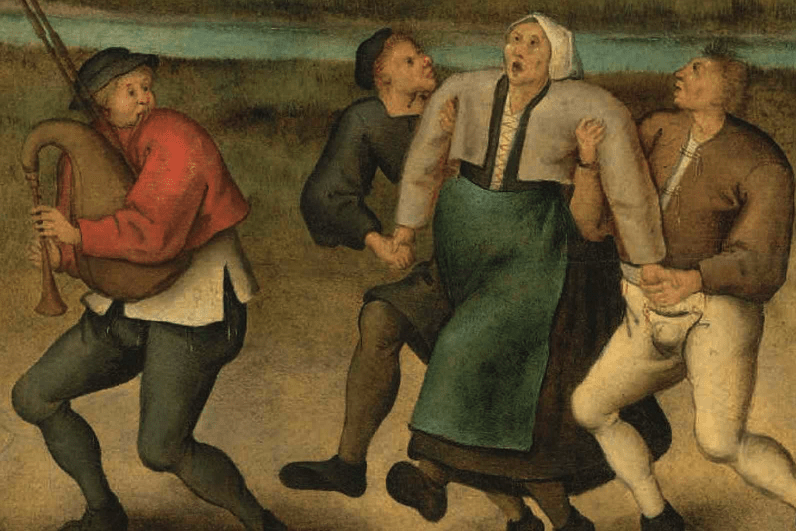In 1518, in Strasbourg France, a Mrs. Troffea started dancing fervently in the town square with no apparent reason; she never stopped!
Within a week 34 people had joined her, and within a month there were 400 merry people – predominantly women – dancing in the streets of Strasburg in what is known as ‘The Dance Plague’.
They danced for a whole month till most of them died of a heart attack, stroke, or exhaustion.
Bonus fact 1: As the dancing plague worsened, concerned nobles sought the advice of the local doctor, who for astrological or supernatural reasons, instead announced that the plague was a “natural disease” caused by the “warmblood” of the dancers. But, instead of performing bloodshed – which was the common practice at that time – the authorities actually encouraged the dances. Amongst other things by assigning halls for the dancers and even building a wooden stage for them. The reason that caused the authorities to do so was the belief that only if patients continued to dance continuously and without rest, day and night – would they cure. To increase the effectiveness of the “cure,” the authorities even paid for musicians to play trumpets and drums and professional dancers to accompany them. The music was used to stimulate them to continue to dance and cure their ills. During that month, attempts were also made to expel them.
Bonus fact 2: The Strasbourg dance epidemic was not the first of its kind in Europe, but it was the most widely documented.
Bonus Fact 3: It is not clear what causes these people to dance, but researchers agree it was not of free will and certainly not for pleasure. From the records, the dancers seemed to be writhing in pain, shouting for help, and begging for mercy. One theory suggests that the dancers were poisoned by ergot, a wheat-grown fungus that infiltrated villagers’ bread, causing hallucinations, cramps, and tremors. But given the number of dancers, and for the long period that occurred, this option seems unlikely. Others believe that the dancers belonged and used dance to express their protest against the church.
